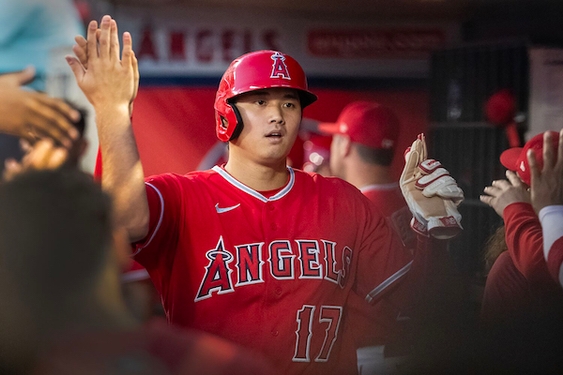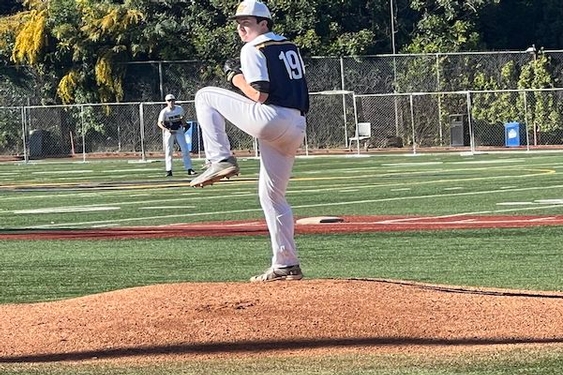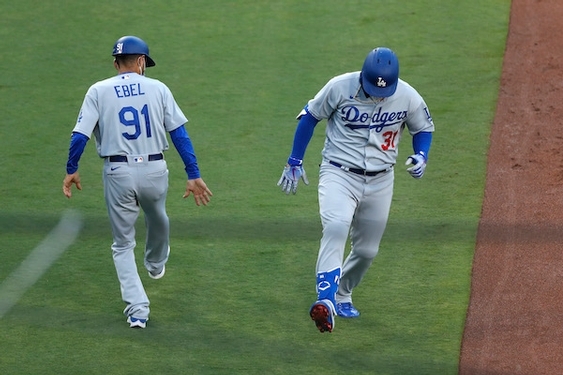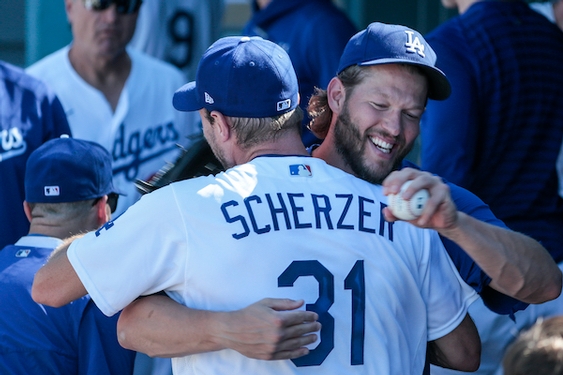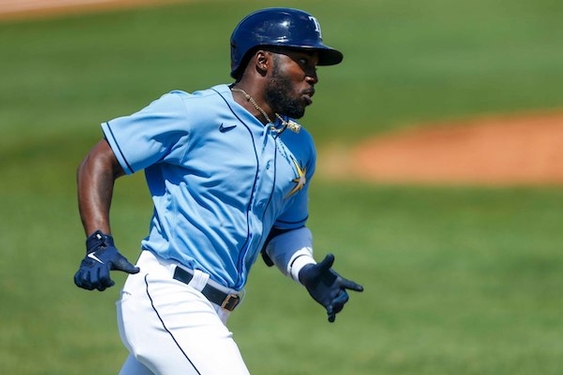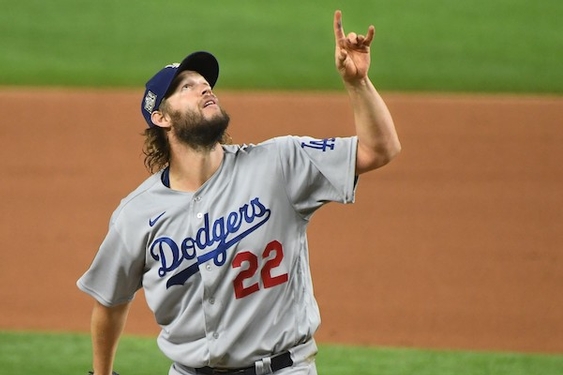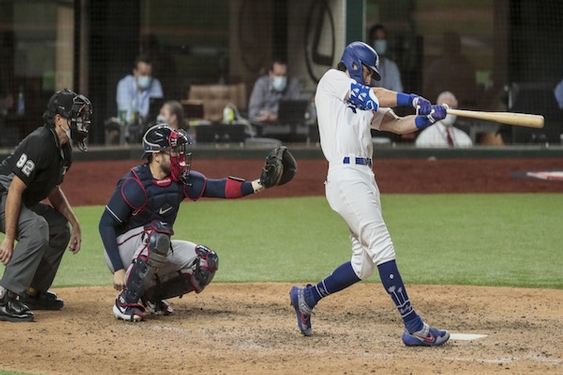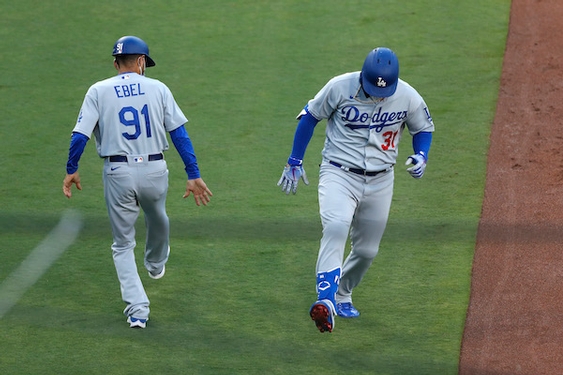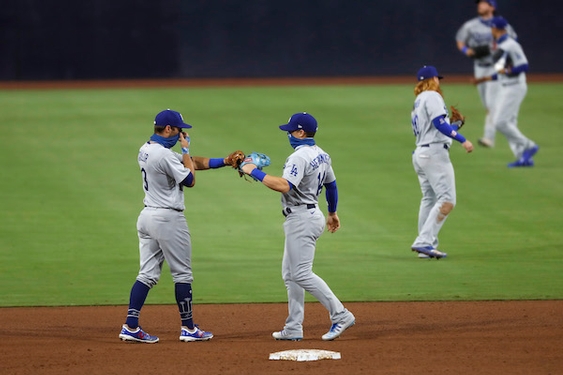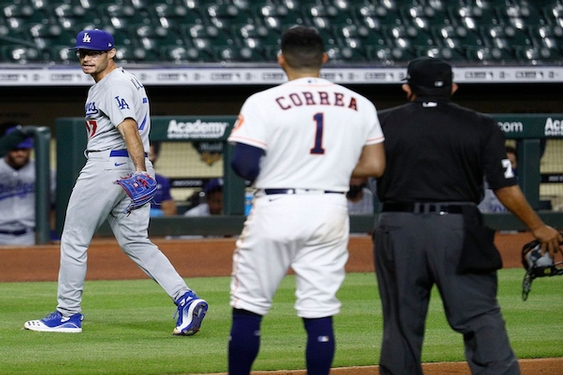The numbers are in. Chicks might still dig the long ball, but Major League Baseball is trending in the opposite direction.
The average team scored 4.07 runs per game in 2014. That’s more than a full run below the peak of 5.14 per game in 2000 and the lowest per-game average since 1981.
If the trend continues, the average team in 2015 might score fewer than four runs a game for the first time since 1976. Home runs, meanwhile, dropped to .86 per team per game last year, the lowest rate since 1992.
The reasons behind the trend are all well-documented: Pitchers throwing more strikes with more velocity than ever; more effective, more restrictive drug testing; a new generation of ballparks; an expanding strike zone. How much weight you want to assign each of those factors makes for good discussion between pitches on Opening Day.
Against this backdrop, the Dodgers and Angels made a curious decision over the winter. Rather than flex their financial muscle and load up on elite sluggers – baseball’s new precious commodity – the two clubs doubled down on run prevention.
The result: The Dodgers and Angels don’t merely have the potential to suffocate run-scoring totals to historic lows in 2015. They’re counting on it.
“From our standpoint, one of the reasons run prevention was so important was that we obviously have a lot invested in our rotation, the top of the rotation,” Dodgers general manager Farhan Zaidi said. “And there’s a little bit of a multiplier effect when you have a good defense.”
Such as?
“You save your top pitchers pitches, you get more innings out of them,” Zaidi explained. “That has a benefit more than keeping runs off the board. It allows you to get more outs out of your top pitchers.
“I think that was the motivating factor, more than trying to figure out what the market was underpricing.”
For Zaidi and president of baseball operations Andrew Friedman, the exercise in team-building required a small leap of faith in past performance.
New shortstop Jimmy Rollins and second baseman Howie Kendrick are 36 and 31, respectively. They are also (above average defenders) according to The Fielding Bible, an annual publication that specializes in advanced defensive metrics.
Rollins’ “calling card over the years has been making plays on the balls he should,” wrote authors John Dewan and Ben Jedlovec. “Consistency on defense has been the summary of Kendrick’s career thus far.”
There is less data to draw from for the Dodgers’ rookie center fielder, Joc Pederson, or catcher Yasmani Grandal. But collectively, they make the Dodgers a different team up the middle of the diamond.
This was so important to Friedman and Zaidi, the Dodgers will be paying slugging outfielder Matt Kemp $18 million this season to play for the San Diego Padres. Another talented hitter but subpar defender, erstwhile shortstop Hanley Ramirez, left as a free agent.
Together, Kemp and Ramirez contributed 38 home runs and 160 RBIs last season. Take away that production, and the Dodgers begin the 2015 season needing to show that they can score.
The Angels’ case is somewhat different. They led the league in runs scored a year ago. Their two most productive run producers, Mike Trout and Albert Pujols, are back.
In trading Kendrick to the Dodgers, Angels general manager Jerry Dipoto was focused less on run prevention than nightmare prevention.
“It was a little ominous last year when, in about a three-week stretch of time, we lost Tyler Skaggs to season-ending Tommy John surgery. A couple weeks later we lost Garrett Richards to season-ending knee injury, then within a couple weeks of that we lost Matt Shoemaker at least for an undefined period of time with an oblique strain,” Dipoto said.
“We’ve got (reliever) Cory Rasmus subbing in (to the rotation) – we needed to build depth. That became a focus for us.”
The pitcher the Angels acquired for Kendrick, Andrew Heaney, will begin the season in Triple-A. At 23, his impact will not be felt immediately.
Then again, Shoemaker began last year at Triple-A. He went on to win 15 games. Setting the Josh Hamilton fiasco aside, the Angels’ top challenge is not to withstand the inevitable pitching injuries that come with a 162-game season, but to replace the offense and defense Kendrick provided the last nine years.
In winning three straight ALDS games last year, the Kansas City Royals “outpitched us every step of the way,” Dipoto said. “But I feel that with the high-powered offense that we can throw out there most nights, with the pitching depth we’ve now been able to accumulate, we have every bit as good a chance to be in that same position.”
———
©2015 the Inland Valley Daily Bulletin (Ontario, Calif.)
Visit the Inland Valley Daily Bulletin (Ontario, Calif.) at dailybulletin.com
Distributed by Tribune Content Agency, LLC


